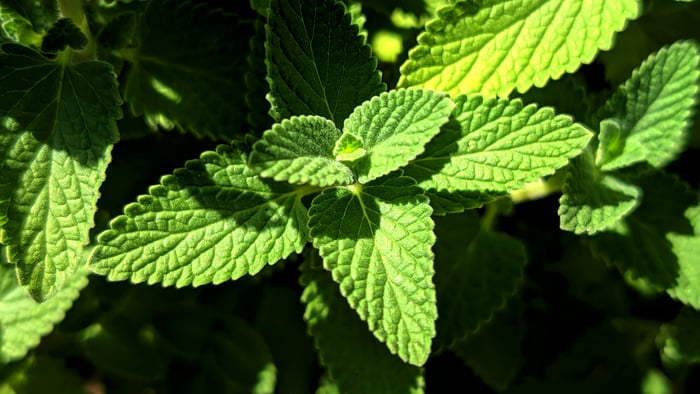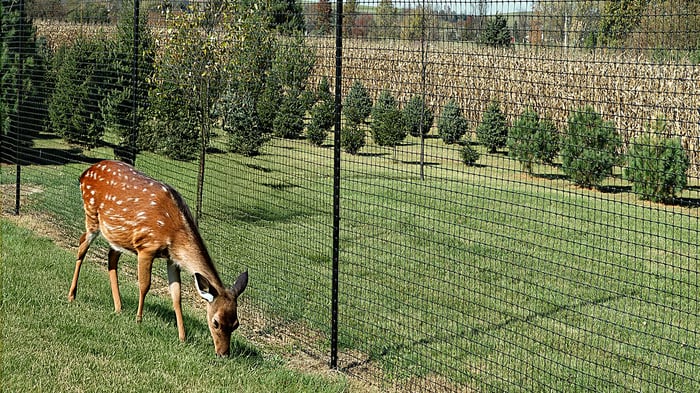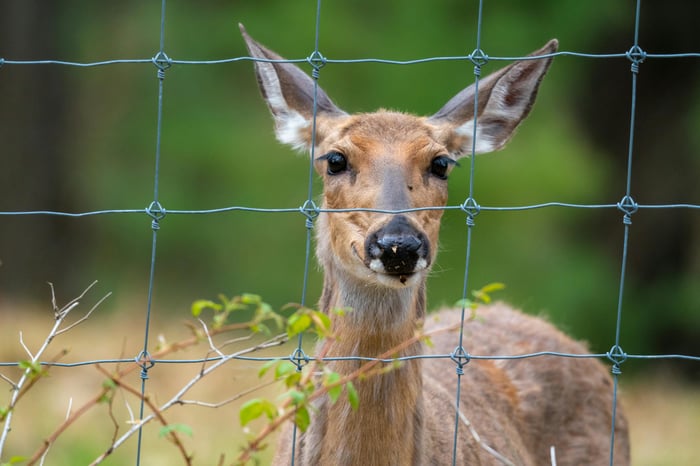
What Deer Love to Eat — and What They Usually Avoid
Deer are graceful creatures, but when they wander into your yard or garden, they can quickly turn into a gardener’s worst nightmare. These animals aren’t picky eaters, and their wide-ranging diets often leave flower beds, vegetable gardens, and ornamental plants stripped bare. Homeowners and landscapers alike ask the same question: what plants are most at risk from deer, and which ones tend to be left alone?
Knowing what deer like and what they tend to avoid is the first step in protecting your landscape. With the right combination of plant choices, protective layouts, and fencing, you can enjoy your garden without it becoming an all-you-can-eat buffet for wildlife.
Why Deer Eat Certain Plants
Deer don’t eat plants at random. Several factors influence their diets at different times of the year:
- Seasonal changes: In spring and summer, deer prefer tender, water-rich plants to recover energy after the winter. In autumn, they seek calorie-dense foods to build fat reserves for colder months.
- Food availability: When natural food sources are scarce, deer are more likely to browse in yards and gardens.
- Plant nutrition: Deer are drawn to plants that provide hydration, energy, or key nutrients their bodies need at the time.
- Soil and plant health: Local growing conditions can affect which plants thrive and, therefore, which are most attractive to deer.
- Opportunistic behavior: Deer will often eat what’s easiest to access, meaning the plants in your yard may become targets simply because they’re abundant and convenient.
Once you understand why deer feed the way they do, it becomes easier to predict what’s at risk in your garden and how to protect it.
Plants That Deer Love To Eat
While deer diets vary depending on season and location, some plants consistently attract them. These garden favorites are high-risk if left unprotected and are worth extra planning when designing your landscape.
Foliage Favorites
Hostas, daylilies, and arborvitae top the list of high-risk plants. Their broad, soft leaves are packed with water and nutrients, making them ideal for spring and summer grazing. Anyone who’s grown hostas knows how quickly they can be reduced to stems overnight when deer are around. Arborvitae, often used for privacy hedges, is also highly vulnerable — deer can strip the greenery from the bottom up, leaving trees bare.
Flowers
Bright, fragrant blooms like tulips, roses, and pansies are irresistible to deer. They’re especially at risk in early spring, when deer are desperate for fresh food after winter, and again in early summer when flower scents are strongest. Even well-established beds can be destroyed in a single evening without protection.
Vegetables
Few things frustrate gardeners more than losing a vegetable patch to deer. Crops like sweet corn, beans, peas, and lettuce are top targets because they’re tender and nutritious. Sweet corn is particularly vulnerable in midsummer, when the ears are developing — deer will tear down stalks to reach it. Lettuce and peas are often eaten early in the season before you’ve had the chance to harvest them. Without fencing, a few deer can wipe out your entire vegetable garden in just one night.

Plants That Deer Tend To Avoid
Although deer are persistent, not every plant appeals to them. Many plant species have built-in defenses that make them unappetizing to herbivores and omnivores. While no plant is truly “deer-proof,” incorporating these into your garden can help reduce damage.
Strongly Scented Herbs and Flowers
Plants like lavender, sage, mint, and foxglove are especially effective at keeping deer at a distance because of their intense scents and natural chemical defenses. Lavender, for example, contains linalool, a terpene with a powerful fragrance that deer find overwhelming. Similarly, members of the mint family (like mint, sage, and rosemary) release strong aromas that not only deter deer directly but also help mask the scent of more tempting plants nearby. Placing these fragrant herbs strategically around your flower beds forms a living “scent barrier” that both disguises vulnerable species and makes your garden less appealing to hungry deer.
Tough or Unpalatable Plants
Ornamental grasses, ferns, and prickly shrubs like barberry tend to be relegated to the “just not worth the effort” category for deer. These plants often feature tough, fibrous, or spiky textures that are physically difficult and unpleasant for deer to chew. Because they’re low in nutritional value, deer switch their focus to more calorie-rich options, leaving textured plants largely undisturbed. Using these kinds of plants as garden borders or fillers creates a tougher-to-browse landscape, which protects more delicate plants behind them.
Toxic or Irritating Varieties
Some garden plants are natural deterrents for deer, not merely through taste or texture, but by containing toxins or compounds deer recognize as harmful. Daffodils, monkshood, bleeding heart, and foxglove carry chemicals like cardiac glycosides and alkaloids that can make deer sick, prompting instinctive avoidance. These defensive traits make such plants serve double-duty: they add visual interest to your landscape while acting as natural safeguards around more vulnerable areas of your garden.
Using Planting Strategies To Deter Deer
While planting deer-resistant varieties is a smart start, it shouldn’t be your only line of defense. Deer are persistent browsers, and when food is scarce, they’ll sample almost anything. The most effective approach is to layer your defenses, combining strategic plant selection with physical barriers like fencing and chemical deterrents. This multi-pronged method makes your yard more difficult for deer to penetrate.
One proven strategy is to design buffer zones. Plant strongly scented herbs, coarse ornamental grasses, or mildly toxic species along the edges of your property or garden beds. These “first-line” plantings act as a natural barrier, forcing deer to encounter unappealing or irritating plants before reaching your more desirable flowers and vegetables. To reduce predictable feeding patterns, rotate plant selections from season to season so deer don’t become accustomed to your layout. Of course, having a net or fence to keep out large animals behind these plants will guarantee the most success.
High-value plants, such as spring tulips or summer sweet corn, may still need added protection during peak growing periods. In these cases, temporary fencing can provide seasonal security while permanent fencing safeguards your property year-round. Layering your defenses gives you the best chance of keeping both your landscape design and your harvest safe from hungry deer.

Keeping Deer Out, Season After Season
Deer can be relentless, and their browsing habits often leave homeowners frustrated and gardeners discouraged. But by combining deer-resistant landscaping with trusted physical barriers, you can protect all your hard work.
At Deerbusters, we specialize in durable, effective deer fencing that provides long-term protection for your property. Whether you’re safeguarding a small backyard garden or a large landscape, our fences are built to stop deer before they get close.
Ready to keep deer out for good? Request a free quote from Deerbusters today to see what we can do to safeguard your plants.
FAQs
What Do Deer Like to Eat the Most?
Deer are particularly fond of tender, high-moisture plants that are easy to digest. Favorites include hostas, tulips, daylilies, sweet corn, beans, and peas. These plants provide quick energy and soft foliage that deer prefer over tougher or strongly scented varieties. Seasonal availability also plays a role, with spring and early summer gardens being especially attractive when new growth emerges.
What Plants Do Deer Avoid Eating?
Deer usually avoid plants with strong fragrances, tough textures, or natural toxins. Lavender, mint, foxglove, and daffodils are examples of plants that are far less appealing. Ornamental grasses and ferns are also typically avoided due to their coarse leaves. While no plant is completely deer-proof, these varieties are far less likely to be damaged.
Are Deer-Resistant Plants Completely Safe?
No plant can be guaranteed to be deer-proof, especially if food is scarce. However, deer-resistant plants are far less likely to be browsed compared to popular favorites. In times of drought or during harsh winters, even deer-resistant species may be nibbled. Using fencing or repellents alongside strategic planting provides the most reliable protection.
Why Do Deer Eat Some Plants But Not Others?
Deer feeding habits are influenced by taste, nutrition, and availability. Sweet, tender plants are preferred because they are easier to chew and digest, while strong-smelling or bitter plants are avoided. Additionally, local deer populations may have different preferences depending on what food sources are common in the area.
Can I Design a Deer-Resistant Garden?
Yes, you can design a garden that minimizes deer damage by focusing on plants they typically avoid and placing them in areas where deer are most likely to enter. Creating borders with strongly scented herbs or ornamental grasses can act as a natural barrier. For best results, combine resistant plants with fencing or repellents to ensure your garden stays protected year-round.

